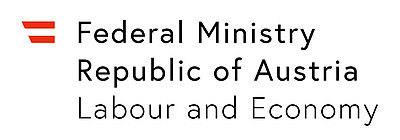
The FIW - Research Centre International Economics (https://www.fiw.ac.at/) is a cooperation between the Vienna University of Economics and Business (WU), the University Vienna, the Johannes Kepler University Linz, the University of Innsbruck, WIFO, wiiw and WSR. FIW is supported by the Austrian Federal Ministries of Education, Research and Science (BMBFW) and of Labour and Economy (BMAW).
FIW Statistics
Current FIW Statistics on International Trade, a clear and graphical overview.
Seminar in International Economics in Winter Term 2013/14
The seminar is part of the activities of FIW, the Centre of Competence in International Economics. Regular lecture series on current issues in international economics.
Location: wiiw Wiener Institut für Internationale Wirtschaftsvergleiche, Rahlgasse 3, 1060 Wien
The Ideal Loan and the Patterns of Cross-Border Bank Lending
February 13th, 4 pm
Jörn Kleinert (with Bettina Brüggemann and Esteban Prieto)
University of Graz
Abstract
A typical loan offer is a differentiated product with various negotiated characteristics (maturity, amount, timing, collateral, disclosure requirements) which involve costs that go beyond the mere interest rate. Taking into account all costs, a firm chooses the cost minimizing loan offer. Based on this decision criterion, we derive the probability of a firm from country i to choose a loan contract from a bank in country j. We use this probability to derive a gravity equation for cross-border bank loans. Finally, we estimate the gravity equation based on the theoretical model controlling for the unobserved heterogeneity proposed by our theoretical model.
Keywords: Product differentiation, Gravity Equation, Cross-border bank lending
JEL Classification: L14, F34, G21
Development of Productive Structures of EU Member Countries and Their International Competitiveness
January 23rd, 4 pm
Andreas Reinstaller
WIFO
Abstract
The study has examined the development of the productive structures of the EU and its Member States by drawing on recent developments in the analysis of economic complexity and international trade patterns. The analysis of these networks reveals unobserved information on the capabilities of countries, the characteristics of products and the structure of the economies. From this information it is possible to construct outcome based indicators on structural change, competitiveness and the growth potential of countries that do not rely on aggregate economic data and indicators that are often strongly correlated with their GDP. Product space measures are also very useful for policy making as they are strong predictors for potential success in international trade. The assessment of Europe’s economies shows that there is a considerable dispersion in the complexity score indicator across Member States. The opportunities for upgrading productive structures are found to be distributed very unevenly across countries and sectors. These disparities typically increase as one gets to the regional level. It may be necessary that in regions with little opportunity for upgrading smart specialisation is complemented by other structural policies to avoid that they do get trapped in inferior productive structures
Keywords: FDI Diversification, Capabilities, Economic complexity, Structural transformation. The product space, development trajectories
JEL Classification: O11, O14, O33, O57, F43
FDI Promotion Policy and Comparative Advantage
November 28th, 4 pm
Beata Smarzynska Javorcik (with Torfinn Harding and Daniela Maggioni)
University of Oxford, CEPR, CESifo
Abstract
Can industrial policy affect the country’s comparative advantage? This study argues that FDI promotion policy is an effective way of shaping the national export structure. We combine product-specific revealed comparative advantage (RCA) indicators with time-varying information on sectors receiving priority status in national FDI promotion efforts during the period 1984-2006. We find a positive and statistically significant relationship between investment promotion efforts and RCA in developing countries. The new Exporter Dynamics Database from the World Bank allows us to further analyse the effects of investment promotion polices across the distribution of firms. The results show that investment promotion efforts are associated with higher values of exports across the distribution of exporters. They also appear to be positively correlated with the firms’ export values, regardless of their initial size in foreign markets, and with the number of export destinations
Keywords: FDI promotion, RCA, exports promotion
JEL Classification: F10, F14, F23, F68
How Important is Total Factor Productivity for Growth in Central, Eastern and Southeastern European Countries?
October 17th, 4 pm
Ludmila Fadejeva (with Konstantin Benkovskis, Robert Stehrer, and Julia Wörz)
Latvijas Banka
Abstract
The evolution of total factor productivity (TFP) is a key determinant of long-run economic growth of a country. In this paper we analyse the contributions from technological change at the industry level to an economy's aggregate growth performance. Our derivation of total TFP growth entails three major improvements over the traditional Solow residual approach. First, we allow for non-constant returns to scale as well as changes in the utilisation of input factors in our estimation of industry TFP growth. Second, we use a novel approach to aggregate TFP from industry level to macro level, which incorporates both direct and indirect effects through intermediate linkages within an economy. Third, we take account of open economy characteristics by assigning an explicit role to terms-of-trade shocks. Our calculations for the sample of 10 Eastern European EU Member States over the time period from 1995 to 2009 are based on the newly available World Input-Output Database (WIOD).
Keywords: total factor productivity, terms of trade, utilisation, input-output table, Central, Eastern and Southeastern Europe
JEL Classification: C23, D24, E23, O47

